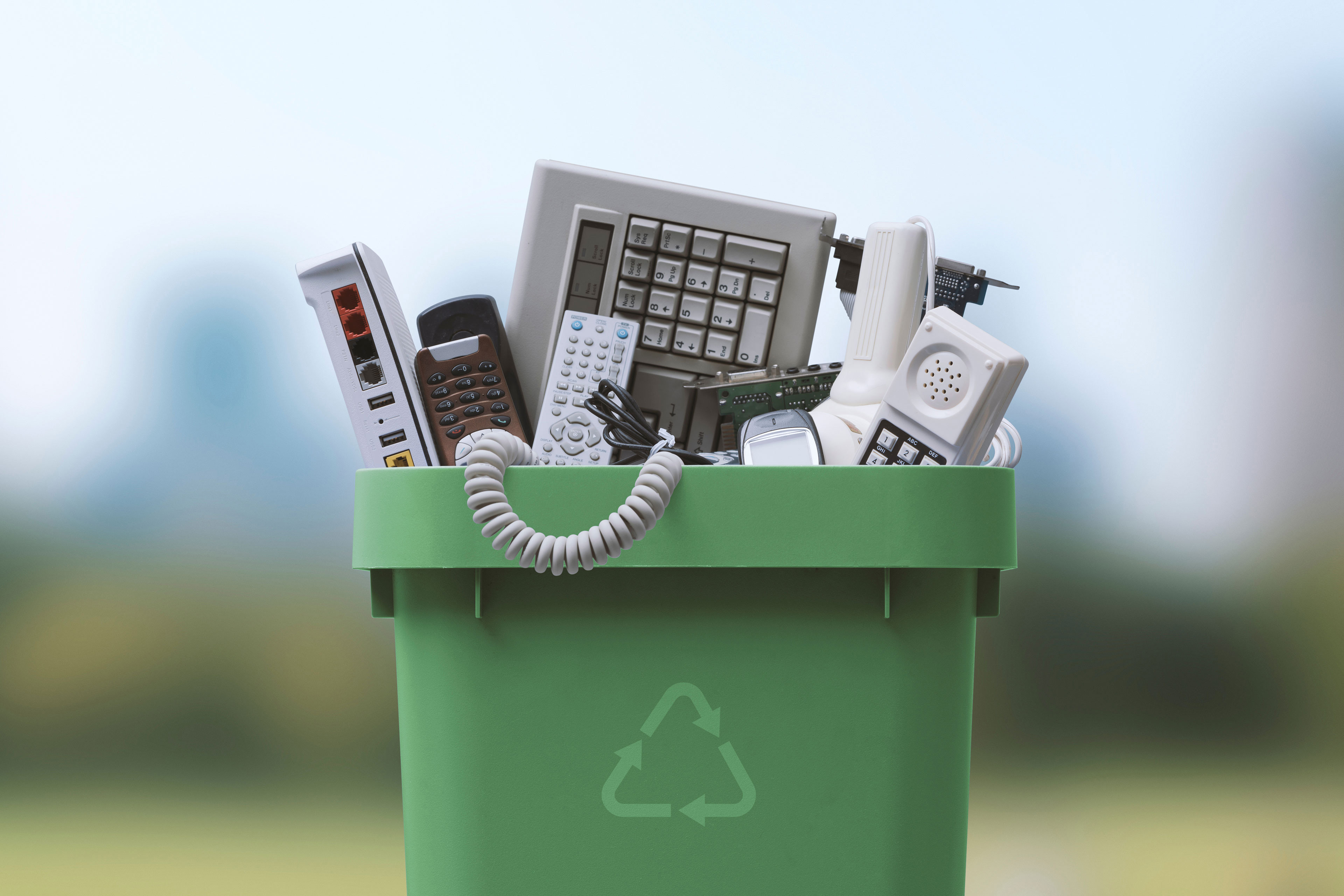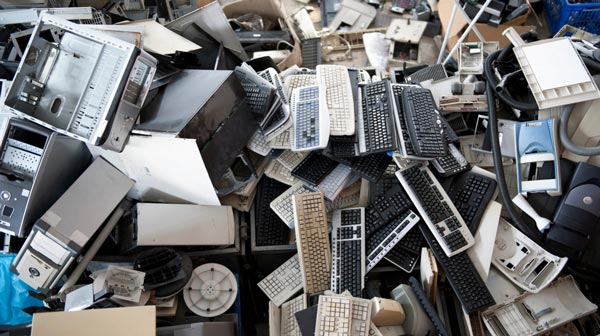R2 Certification: The Mark of Quality in Electronic Devices Recycling
R2 Certification: The Mark of Quality in Electronic Devices Recycling
Blog Article
Elevate Your E-Waste Monitoring With R2 Qualification: a Detailed Introduction
In the realm of liable electronic waste administration, the relevance of executing effective strategies can not be overstated. As innovation rapidly advances, the requirement for correct disposal and recycling of digital tools has actually ended up being increasingly essential. One secret method to boost e-waste monitoring techniques is by obtaining R2 qualification. This qualification stands as a trademark of quality in the area, indicating adherence to rigorous requirements that guarantee eco sound practices. By exploring the benefits and procedures linked with R2 certification, a deeper understanding of just how it can revolutionize e-waste administration strategies emerges, dropping light on a path in the direction of sustainability and ethical disposal methods.
Relevance of E-Waste Monitoring

When e-waste is not taken care of properly, these poisonous materials can seep right into the ecological community, creating damage to wild animals and potentially going into the food chain, posturing threats to human health and wellness. The improper disposal of e-waste adds to contamination and greenhouse gas exhausts, exacerbating environment change and environmental deterioration.

Advantages of R2 Qualification

To start with, R2 certification improves reputation by showcasing a company's commitment to sustainable techniques. It ensures consumers, companions, and stakeholders that the company sticks to rigorous requirements for e-waste management - r2 certification. This integrity can bring about enhanced depend on and boosted relationships with customers that prioritize environmental responsibility
Secondly, R2 qualification helps mitigate threats related to inappropriate e-waste disposal. By adhering to the strict guidelines established forth by the qualification, organizations can minimize the probability of data breaches, environmental contamination, and legal repercussions. This proactive strategy safeguards the business's reputation and decreases potential liabilities.
Finally, R2 accreditation shows a commitment to environmental stewardship - r2 certification. By properly handling electronic waste with accredited processes, companies add to the preservation of resources, reduction of pollution, and promotion of a circular economy. This commitment not only profits the atmosphere however likewise straightens with evolving consumer assumptions for sustainable business techniques
R2 Certification Refine Summary
Having developed the advantages of R2 accreditation in advertising reliability, danger mitigation, and ecological stewardship, it is important to now lay out the in-depth process included in obtaining this accreditation. The R2 accreditation process begins with a comprehensive testimonial of the company's operational policies and procedures to guarantee compliance with the R2 requirement. This preliminary evaluation is vital in identifying any type of gaps that need to be dealt with prior to proceeding even more.
When the company's methods line up with the R2 basic requirements, an independent third-party auditor carries out an on-site audit to evaluate the implementation and effectiveness of these techniques. This audit consists of an extensive evaluation of documents, interviews with team, and physical examinations of centers to validate compliance.
Adhering to an effective audit, the organization gets a qualification decision based on the auditor's findings. If approved, the organization is provided R2 accreditation, demonstrating its commitment to liable e-waste monitoring. It is essential to keep in mind that preserving R2 certification needs recurring conformity with the standard's demands and regular audits to make sure continued adherence to best methods in e-waste recycling and disposal.
Key Criteria for R2 Compliance
A vital aspect of accomplishing R2 conformity is making sure that all electronic waste (e-waste) processing facilities fulfill rigid ecological and security criteria. To abide with R2 requirements, companies must comply with essential requirements that find here concentrate on liable e-waste management techniques. These standards consist of executing a documented environmental, health and wellness, and safety and security management system, guaranteeing the protected handling of data-containing gadgets, and carrying out thorough downstream due persistance to track the last destination of e-waste materials.
Additionally, R2 compliance requires the appropriate screening, refurbishment, and recycling of digital tools to expand its useful life and decrease ecological impact. Facilities seeking R2 qualification must likewise prioritize employee health and wellness by offering essential training, personal safety devices, and a risk-free working environment. Additionally, preserving in-depth records of e-waste processing tasks and frequently undertaking audits by certified accrediting bodies are crucial components of showing recurring compliance with R2 criteria.
Influences of Lasting E-Waste Practices
The implementation of lasting e-waste techniques based on R2 conformity not only makes certain environmental and security standards are satisfied but likewise significantly impacts the general lifecycle of electronic items. By sticking to R2 standards, electronic waste administration procedures come to be a lot more efficient, decreasing the environmental footprint of digital items. Sustainable e-waste techniques assist in the appropriate disposal of digital parts, ensuring that hazardous products are taken care of properly and do not end up contaminating the atmosphere.
Furthermore, accepting sustainable e-waste practices advertises the round economic situation by facilitating the recuperation and reuse of valuable products from electronic items. This not just saves priceless resources however likewise minimizes the need for raw product extraction, decreasing the ecological effect of digital manufacturing. Additionally, lasting e-waste techniques can add to task creation in the recycling and repair markets, fostering financial development while additional reading advertising environmental duty. In general, the adoption of lasting e-waste techniques under R2 qualification serves as an essential action in the direction of attaining an extra eco sustainable electronics sector.
Verdict
Finally, executing appropriate e-waste monitoring techniques is important official source for ecological sustainability and resource preservation. R2 certification plays a key role in ensuring liable handling and disposal of digital waste. By sticking to the rigid criteria established forth by R2 criteria, organizations can not only decrease their ecological influence yet also add to a more sustainable future for generations to find.
One key technique to boost e-waste administration practices is by achieving R2 qualification. By checking out the processes and advantages connected with R2 accreditation, a much deeper understanding of just how it can revolutionize e-waste monitoring methods emerges, dropping light on a course in the direction of sustainability and honest disposal methods.
The R2 qualification process begins with a thorough testimonial of the organization's functional policies and procedures to guarantee conformity with the R2 criterion. If approved, the company is approved R2 accreditation, showing its dedication to liable e-waste monitoring. In general, the fostering of sustainable e-waste techniques under R2 qualification serves as an important step in the direction of achieving a much more eco lasting electronic devices industry.
Report this page